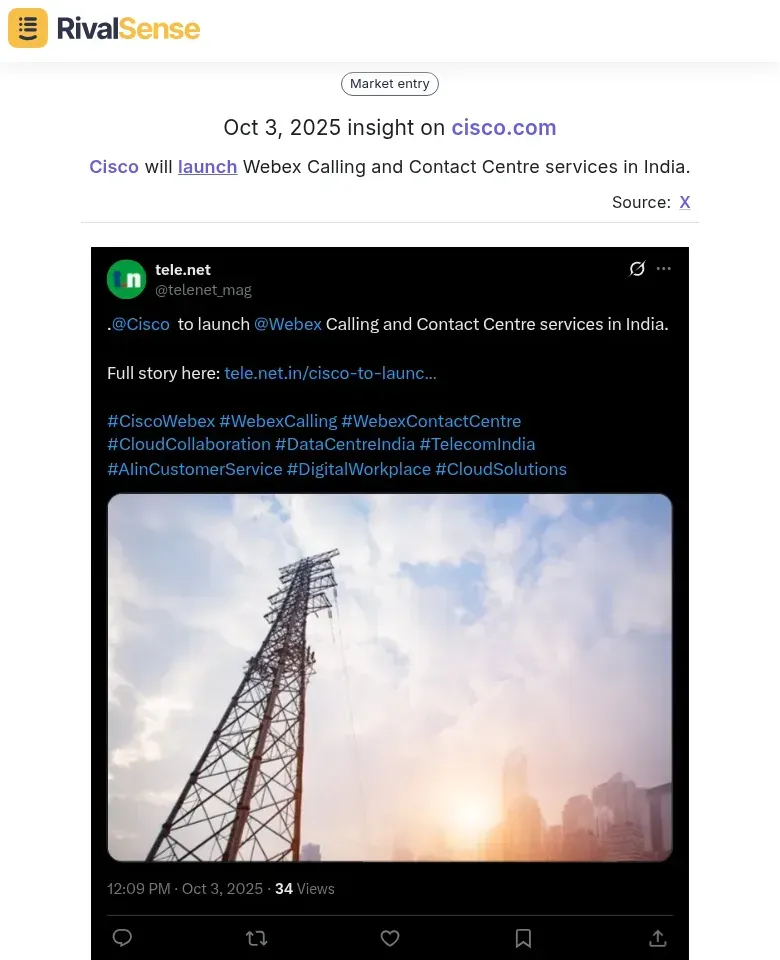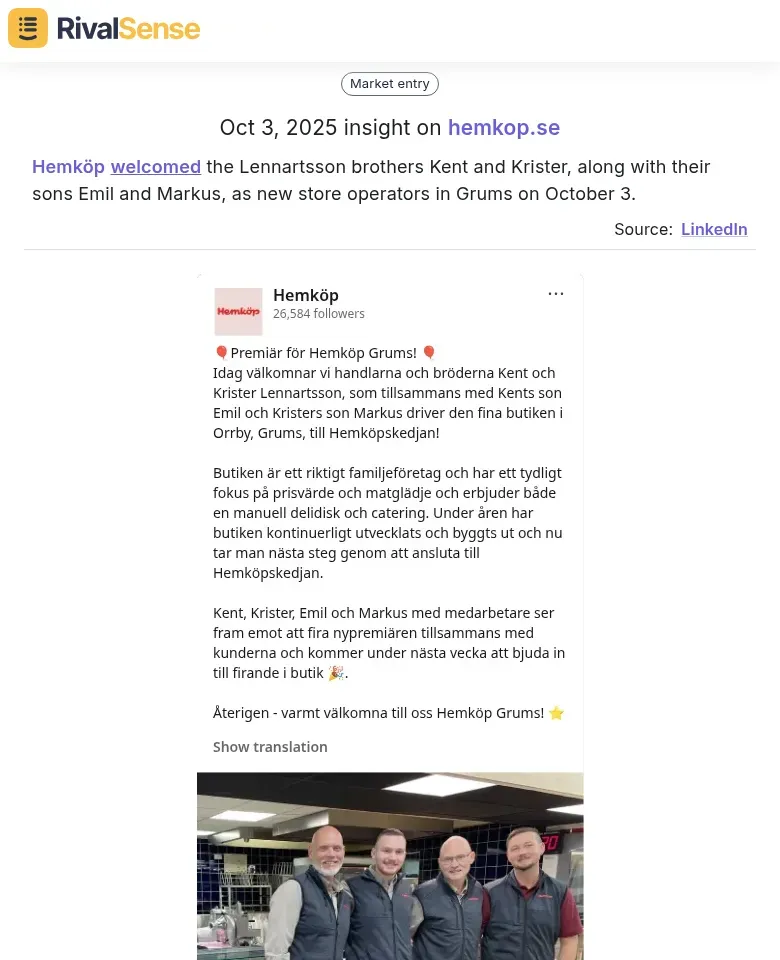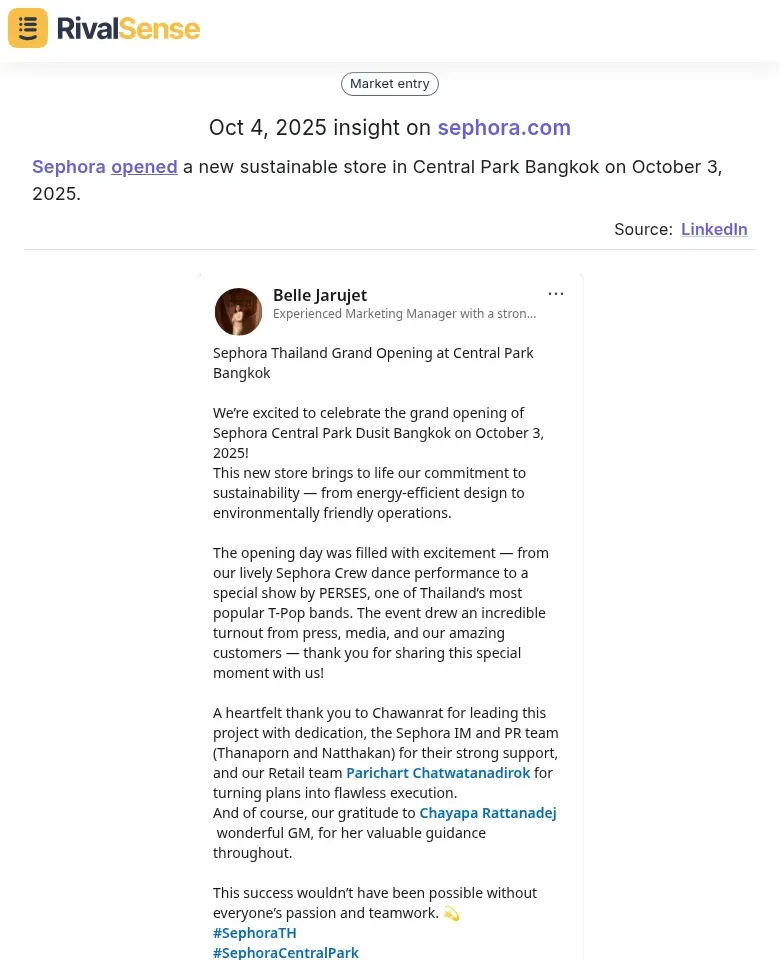Competitor Market Entry Insights: Benchmarking Reports for Strategic Growth
When competitors enter new markets, they reveal untapped opportunities and market gaps you might have missed. Their expansion decisions—whether into new geographies, customer segments, or product categories—serve as real-world validation of growth potential. By analyzing these moves, you can identify underserved areas and emerging trends before they become mainstream.
Benchmarking against competitor market entries transforms vague ambitions into actionable strategic plans. Compare their launch timelines, resource allocation, and market positioning to set realistic goals for your own expansion. This data-driven approach helps you avoid costly mistakes and allocate resources more effectively.
Real-time competitor tracking elevates your strategy from reactive to proactive. Instead of scrambling to respond to competitor announcements, you can anticipate their next moves and position yourself accordingly. Practical steps include:
- 🔍 Monitor competitor job postings for expansion clues
- 📍 Track their new office openings and partnerships
- 📊 Analyze their customer acquisition strategies in new markets
- ⏱️ Benchmark your market entry speed against industry leaders
By leveraging these insights, you can turn competitor intelligence into a strategic advantage, ensuring your growth initiatives are informed, timely, and competitive.
Analyzing Geographic Expansion: Learning from Competitor Moves 🗺️
Geographic expansion requires strategic insight into competitor moves. Analyze their entry patterns to identify untapped markets—if competitors target regions with similar demographics but avoid others, investigate why. For example, if SaaS firms expand into Southeast Asia but skip Africa, assess infrastructure, regulations, and demand gaps.
Use competitor benchmarking reports to evaluate regional demand and cultural fit: study their localization efforts, pricing adjustments, and customer feedback in new markets. This reveals adoption barriers and opportunities. Benchmark entry strategies like phased rollouts, partnerships, or acquisitions to optimize your own approach.
Actionable Steps:
- Track competitor expansions via automated tools
- Map their success metrics (e.g., user growth, retention rates)
- Conduct SWOT analysis on targeted regions
- Pilot test in low-risk areas before full-scale entry
💡 Tips: Prioritize markets with high demand alignment and low competitive density. Avoid cultural missteps by learning from competitors' failures—e.g., a brand that ignored local holidays saw engagement drop. By leveraging these insights, you can reduce risks and accelerate growth in new geographies.
Product and Service Launches: Benchmarking Innovation 💡
When competitors launch new products or enhance existing ones, they reveal valuable market intelligence. Track their feature updates, pricing changes, and customer feedback to identify unmet needs and emerging trends. For example, if a rival introduces AI-powered analytics, assess whether your market is ready for similar innovation.
Benchmark launch timing against market conditions. Did they enter during peak demand seasons or after regulatory changes? This helps evaluate market readiness and informs your own timing strategy.
For instance, RivalSense tracked that Cisco will launch Webex Calling and Contact Centre services in India.  Insights into product and service launches are valuable because they highlight innovation trends, reveal geographic expansion strategies, and help you anticipate competitive threats to refine your own roadmap.
Insights into product and service launches are valuable because they highlight innovation trends, reveal geographic expansion strategies, and help you anticipate competitive threats to refine your own roadmap.
Use these insights to refine your product roadmap with this checklist:
- ✅ Analyze competitor features and customer reactions
- ✅ Assess technical feasibility and resource requirements
- ✅ Prioritize developments that align with your core strengths
- ✅ Monitor launch announcements and social media buzz for rapid iteration
Partnerships and Operator Models: Strategic Alliances for Growth 🤝
Strategic alliances are powerful growth accelerators, but learning from competitor partnerships reveals untapped opportunities. Analyze how competitors structure collaborations—whether through joint ventures, co-marketing, or technology integrations. Identify gaps where you can partner with their former allies or complementary businesses they've overlooked.
Operator and franchise models offer scalable expansion paths worth benchmarking. Study how competitors manage franchisee relationships, support structures, and quality control. Look for patterns in their geographic expansion—did they use master franchisees or direct operations?
For example, RivalSense reported that Hemköp welcomed the Lennartsson brothers Kent and Krister, along with their sons Emil and Markus, as new store operators in Grums on October 3.  Tracking operator models and partnerships is crucial because it uncovers scalable growth tactics, reveals potential alliance opportunities, and helps you adopt best practices for managing relationships.
Tracking operator models and partnerships is crucial because it uncovers scalable growth tactics, reveals potential alliance opportunities, and helps you adopt best practices for managing relationships.
Practical Steps:
- Map competitor partnership ecosystems using reliable tools
- Benchmark alliance terms: revenue sharing, exclusivity clauses, support levels
- Create a partner evaluation checklist: market alignment, resource commitment, cultural fit
- Analyze competitor franchise documents for expansion insights
Sustainability and Market Positioning: Differentiating Your Entry 🌱
Sustainability isn't just an ethical choice—it's a competitive advantage. Analyze competitor sustainability reports, green initiatives, and ESG metrics to identify emerging trends. For example, if rivals are adopting carbon-neutral logistics, consider how you can innovate further, perhaps through circular supply chains or regenerative practices.
Market positioning shapes customer perception. Map competitors' positioning on axes like price-quality, innovation-tradition, or local-global. Notice gaps: if all players target premium segments, an affordable sustainability angle could capture loyalty.
RivalSense insights show that Sephora opened a new sustainable store in Central Park Bangkok on October 3, 2025.  Monitoring sustainability initiatives is valuable because it reflects evolving consumer values, differentiates your brand, and can drive long-term loyalty by aligning with market trends.
Monitoring sustainability initiatives is valuable because it reflects evolving consumer values, differentiates your brand, and can drive long-term loyalty by aligning with market trends.
Benchmark against competitors to craft your entry story with this checklist:
- ✅ Review competitors' mission statements and value propositions
- ✅ Identify underserved customer needs via social listening tools
- ✅ Test your narrative with focus groups for uniqueness and appeal
- ✅ Emphasize differentiation, e.g., eco-friendly products if competitors focus on speed
Actionable Steps: Implementing Insights into Your Growth Strategy 🚀
To implement competitor market entry insights effectively, start with a systematic tracking approach. Use tools like RivalSense to monitor competitor announcements, product launches, and market expansions. Create a central dashboard with key metrics: entry timing, target segments, pricing strategies, and initial customer feedback.
Next, develop benchmarking reports that compare your performance against new entrants. Analyze their go-to-market strategies, value propositions, and early traction. Identify gaps in your offerings and opportunities for differentiation. For example, if a competitor targets an underserved niche, assess whether you can pivot or enhance your services to capture that segment.
Integrate these insights into your business plan by:
- Updating SWOT analyses regularly
- Setting measurable goals (e.g., increase market share by 10% in six months)
- Allocating resources to high-impact areas based on competitor data
- Using monthly competitor reviews and quarterly strategy adjustments
Checklist for Success:
- [ ] Automate competitor tracking with tools like RivalSense
- [ ] Benchmark entry strategies and performance metrics
- [ ] A/B test new tactics inspired by competitor moves
- [ ] Foster a culture of continuous learning and adaptation
Ready to turn competitor insights into growth? Try RivalSense for free at https://rivalsense.co/ and get your first competitor report today to proactively shape your market entry strategy!
📚 Read more
👉 Analyzing Competitor Certifications and Partnerships: A Real-World Insight
👉 Key Account Management Training: Mastering the Miller Heiman LAMP Framework with Modern Tools
👉 Environmental Consulting Key Account Tracking Templates & Frameworks
👉 How VEED's AI Expansion Strategy Outpaced Competitors
👉 Competitor Analysis: Uncover Strategic Insights from Product Launches and Expansions
